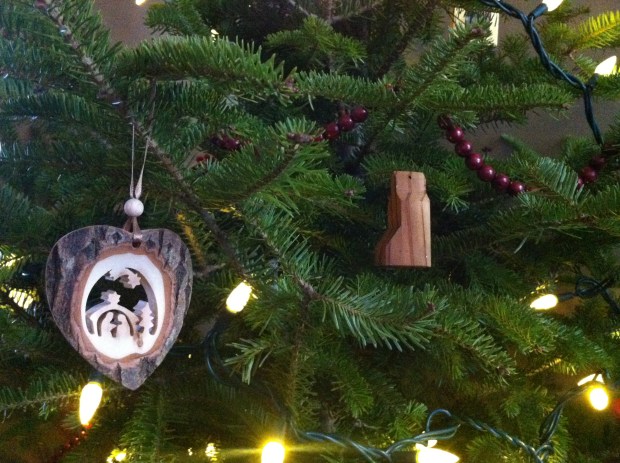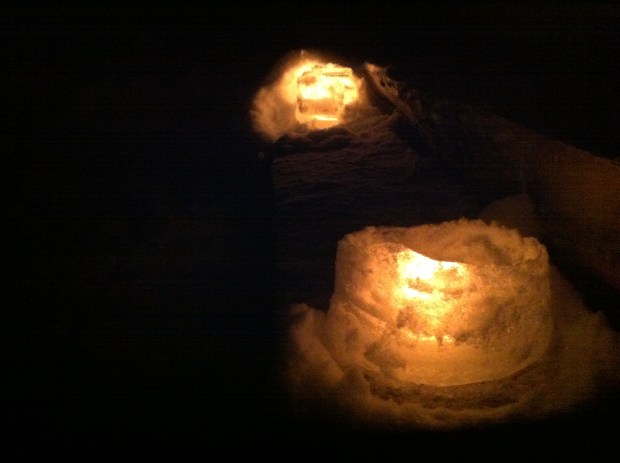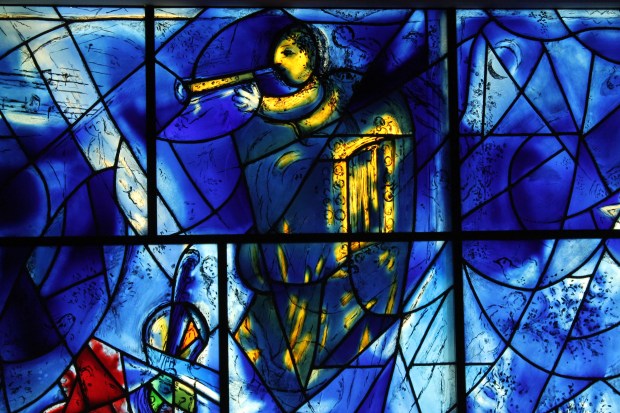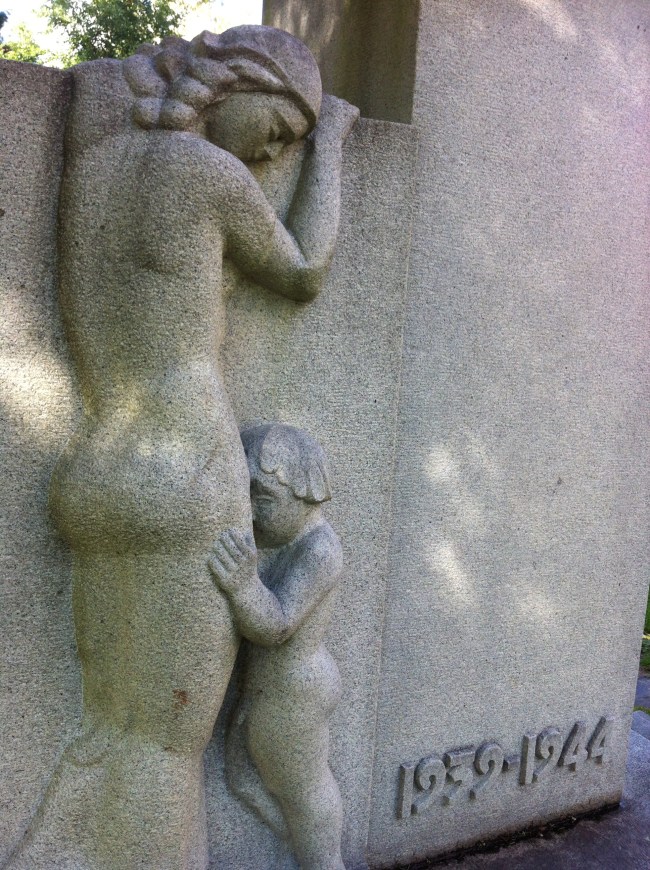
The Don Valley Christmas Eve Riot
Matthew Anderson
I heard a story once – I don’t know if it’s true – about a Toronto bank president and the famous Don Valley Christmas Eve Riot. I’m sure you remember reading about that riot in the papers. It happened…when?….in the late 90’s sometime. A while ago now. The story is about the president of one of the big banks, but don’t ask me which one. I couldn’t tell you.
Apparently, this man was some major Chief-Executive-Officer-type. He was pulling down millions, sitting on more corporate boards than you or I own pairs of shoes. Connected to everybody. A real player. Fingers in everything – politics, business, you name it. When he wasn’t in a limo he drove a Porsche SUV, because his bank figured he needed to be one step up on his neighbours, who all had BMW SUV’s. Perfect car, perfect holidays, perfect clothes, perfect life. His house was in Rosedale, looking, during the holidays, like something from the front of a greeting card.
This guy didn’t have to worry about the Hydro bill. Look at it that way.
But late one night near Christmas when he couldn’t sleep – insomnia was a side-effect of his high-octane life – this CEO happened to be flipping channels when he saw a news special, one of those topical pieces they always come out with in mid-December. This one was called “A Squatters’ Christmas” and it was on the plight of the squatters near the Don Valley Parkway. There were a bunch of them back then, encamped on that patch of land you see when you take the Don Valley south, right between the highway and the bluffs. A TV reporter had gone out with a camera and taken some footage. Those folks had a real little village set up, out of the way, not bothering anyone.
Somehow, by some miracle, that one little program changed this bank president’s life. He saw people he’d never really thought much about before – people without running water, people who had addictions to alcohol or crack or something else, prostitutes and pushers and folks with mental-health problems. People whom the world had forgotten. What was worse, the city was threatening to bring the bulldozers in and smash up the few things they DID have.
So this bank president, whose heart had been touched, decided to check it out for himself. He sent his assistant to Value Village to buy the rattiest clothes the assistant could find. He let his beard grow until he had two days’ worth of stubble. Then he parked his Porsche at the top of the hill, and clambered down through the trees, just a couple of days before Christmas, with a Canadian Tire tent on his back and a few cans of tuna. He didn’t tell anyone where he was going, because he really wanted to make this HIS thing. He didn’t want half the company showing up to save him, or worse yet, showing up to try to help. This was his thing. So, apart from his wallet, he left EVERYTHING – even his Blackberry – in the Porsche.
Oddly enough, when the CEO found the squatters’ settlement, there was no place for him. What he hadn’t realized was, the squatters were a community, with a sense of who they liked and who they didn’t. He might have been dressed down, but he was still a stranger. What’s more, he was still himself. Used to taking charge. So he tried ordering them around, but who was he, to them? Just another pushy outsider. And anyway, it was like herding cats.
“You can protect yourselves,” he told them, “It’s not that hard! I know what’s coming! Organize like this.” But they didn’t listen. “You don’t need your addictions,” he told them. “There’s a better way”. Of course, that made him an outsider in another way. “You know what? I can help you,” he told them. At THAT they just laughed. After all, what did he look like to them? Some white bread would-be squatter. And with his tent and tuna, not even a particularly smart squatter. Some folks listened to him. Some thought had no street sense. Most just ignored him. One more crazy.
The bulldozers had been lined up and parked by the city right outside the squatters’ settlement, a big yellow line of destruction waiting for the go-ahead. Construction crews had come through and put eviction notices on the trees. The squatters had decorated one tree like a Christmas tree, and there was even an eviction notice on that one. The CEO, who knew the mayor personally, knew that the mayor was just waiting for a time when the public was distracted by the holidays, to move in and break up the illegal settlement. So as the hours ticked by, the CEO got more and more frustrated.
“Why won’t you just listen to me?” he cried out in frustration. There was a small group of squatters that did – but only a dozen or so. “Who do you think I am?” he asked them. “A loonie” said one of the group, “but a nice one.” “A social worker,” said another. And you? he asked the leader of his group. “You really are a bank president,” came the answer. “Then follow me,” the man said “We’ll go up the hill to my Porsche and I’ll call the mayor and he’ll meet you and we’ll settle this whole thing.” So the little group – half of them laughing – all trudged up the hill after the CEO, and when they got to the spot where he’d parked his Porsche, there was nothing there.
“We KNEW it!” they told him, “you’re just one of us.” The bank president thought about his assistant, and about how he could recover his stolen car. That was when they heard the diesel motors on the bulldozers starting up. Everyone went running, pell-mell, back down the hill.
At the camp it was mayhem. The police were shouting through loudspeakers to clear out. In the falling darkness people were running everywhere through the trees, trying to grab their things, or just get out of the way. The CEO tried to keep his little band together…maybe he could find the chief of police, he thought. Explain everything.
And that’s when the first canisters of pepper spray hit. The squatters began coughing and wheezing, choking and tearing up. The CEO couldn’t see a thing. Some of the squatters picked up tree branches to try and protect themselves. All of a sudden the riot police were everywhere, and in all the yelling and screaming and crying, someone hit the CEO, hard. He went down.
When he came to, there was a very large man in a uniform above him holding a riot club. He couldn’t see very well, so he wiped his eye. It came away all bloody. “Get up, ya friggin drunk!” yelled the cop. The CEO tried to get up, but was having trouble, and put his hand on the cop’s leg. “Hey! What do you think you’re doing?” said the big man, and the CEO felt the truncheon hit him on the side of his face again.
And then what happened? Well, witnesses say the CEO reached into his pocket for his wallet, to prove who he really is. And that’s when the story gets strange.
Because I’ve heard two very different versions of the ending of the Don Valley Christmas Riot story.
The first is this: when the CEO reached into his pocket, the cop standing there thought he was dealing with a man who was going for a gun. And the first version of the story ends, more or less, there. Terribly. According to this version the CEO died, that day. On Christmas Eve.
But the second version of the story – the one I like better – is that the cop’s second blow hit the CEO so hard he lost his memory. And eventually, in all the confusion of the riot, the CEO just up and drifted away, like so many of the other squatters, back into the darkest blocks of downtown.
According to this version of the story, the next day the city crews found the wallet. So now they knew there’d actually been a bank president among the squatters that night in the Don Valley Riot. But they didn’t know which bum he was. Or more to the point: which bum he IS.
Because he’s still out there somewhere. So ever since that one Christmas Eve, the police – and not just the police – have had to treat every drunk they meet, every half-crazy person with mental health problems, every bum and panhandler and street-person, as if they just might turn out to be Mr. Connected…someone with rights. Someone with very good friends in high places.
And so, to everyone’s surprise, what the CEO couldn’t do by teaching the squatters, he did anyway. Just by still being out there. What I heard is that the authorities are trying to find him. But in the meantime, one can never be certain. And since even homeless people move around from city to city, every street person you or I meet has this – what would you call it? Consequence. All because of that one Christmas Eve not long ago, and the Don Valley Christmas Eve Riot.
That’s what I heard, anyway. Mind you, some people say it’s just a story.
Could be. But I like it.






 (with thanks to Alice Zorn,
(with thanks to Alice Zorn, 


